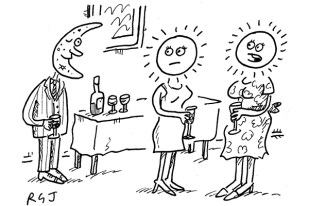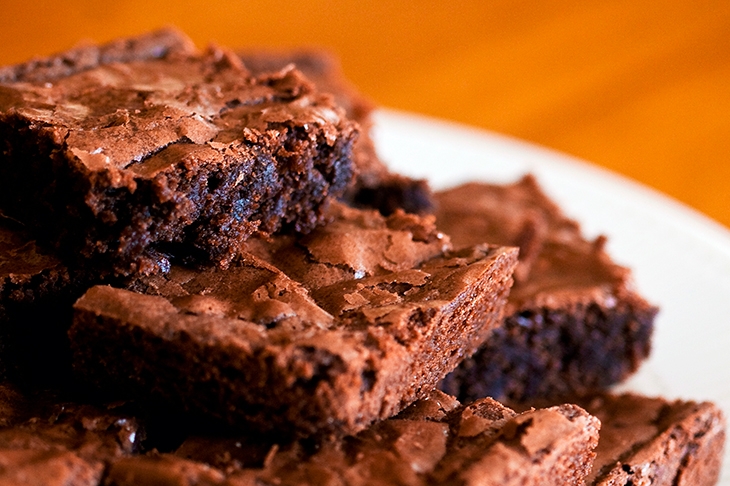Nigella Lawson is many things to many people: the perfect hostess, the TV star, the thinking man’s crumpet. To me she’s always embodied the joy of sharing food with friends and family. Her books and television shows burst with conviviality, with parties and suppers. Now we are in the middle of a pandemic that has all but taken that pleasure away, but luckily the Domestic Goddess has always had an uncanny knack for moving with the times. Cook, Eat, Repeat, Lawson’s 12th book, is a celebration of home cooking — a defence of repetition in the kitchen and on the dining table which couldn’t feel more apposite.
The book is structured around seven essays — significantly longer than traditional chapter introductions — on topics ranging from ‘What is a recipe?’ to ‘A loving defence of brown food’. There are several pages devoted simply to rhubarb. It’s easy to forget, given her fame, that Lawson made her name with just such long prose in her first book, and it is a treat to read her writing again without the usual constraints of cookbooks. She is expansive and discursive without being baggy. She tackles the big topics that have roiled the food world in recent years: authenticity, provenance and ownership; comfort and guilt. And she does all of this without either preaching or boring you.
Lawson has a precise way with words, and her descriptions are as evocative as they are unusual: she writes of a ‘conker-shiny, wine-dark stew’ and talks about black pudding’s ‘visceral mauve-grey glory’. Peas have a ‘hyper-green perkiness’ before cooking, and a ‘khaki drabness’ after, while the Italians turn their greens into an ‘olive oil-soused pond mulch’.

A good cookbook shouldn’t merely be a good read; it must be both functional and pleasurable to cook and eat from. Cook, Eat, Repeat is intensely practical. As well as ‘proper’ recipes, there’s an avalanche of ideas, serving suggestions and short recipes written into the body of the prose, as well as swaps, variations and dietary substitutes. ‘Cooking in real life necessarily involves compromise,’ Nigella writes — but she never makes it feel like a compromise.
I bookmarked recipes until my copy was a rag-rug of Post-Its. When I reached the ‘Mine-all-mine sweet and salty chocolate cookies’, I put the book down and went straight to the kitchen. These are double-chocolate cookies that you can bake in a batch of just two. I’m not usually a fan of these, but Nigella’s are brilliant. I magnanimously gave one to my husband: ‘I don’t normally like double-chocolate cookies,’ he said, ‘but I love these!’ When Nigella suggests serving a roast chicken on a bed of salted crisps I audibly gasped.
There are the things you would expect from a Nigella book: crumbles (cherry and almond), trifles (rhubarb and custard), chocolate cakes (with peanut butter icing). But among them are new delights. She ferments hot sauces and pickles cabbage, slow cooks short rib stews and guides you through all the elements needed for a Swedish Christmas.
Many recipes are designed to serve one person – which is a rare and lovely thing in a cookbook
Much of the writing is disarmingly personal. She talks about her need for strict control in the kitchen, her regrets and anxiety and how she uses cooking to ‘silence that chattering monkey-mind’. More even than in her previous books, it feels as though Nigella is inviting us into her kitchen. As she puts it:
A recipe is the very antithesis of abstract. The recipes I write come from my life, my home. They tell a story, and that story is mine; I could not tell another’s.
Cook, Eat, Repeat reflects the strange and difficult world it has been born into. Many of the recipes are designed to serve one, which is a rare and lovely thing in a cookbook. Nigella enjoins us to feast with friends when we can, and find happiness in dining alone when we can’t. Every page crackles with the sheer pleasure of cooking and eating, in whatever way you choose, and there is no finer quality in a cookbook than that.
The late food writer Laurie Colwin said:
No one who cooks, cooks alone. Even at her most solitary, a cook in the kitchen is surrounded by generations of cooks past, the advice and menus of cooks present, the wisdom of cookbook writers.
Never has this felt more important than now — and never has it felt truer than when reading Cook, Eat, Repeat.







Comments